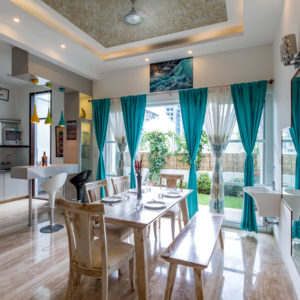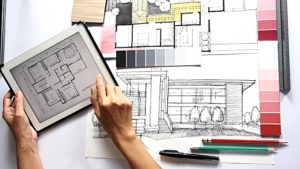
Login
X
- Home
- About Us
- Courses
- Graduation
- Diploma Certificate
- Professional Diploma
- Special sessions / Aptitude boost up
- News & Events
- Student zone
- Placement
- Gallery
- FAQ
- Contact Us

Interior design portfolio
An interior design portfolio is a collection of visual representations that showcase past and current interior design projects, similar to a resume. An outstanding portfolio showcases why an individual should be selected to join a team of designers or hired by a company. An interior design portfolio highlights an interior designer’s personality and planning abilities. A portfolio usually showcases an individual’s style, fashion sense, and creative processes through imagery rather than words, as it contains more pictures than text.
Important steps to make an interior design portfolio
Whether you want to work for an established firm or go it alone, you must show that you are a skilled and competent professional who can be relied on to produce quality work.
Craft an attractive introduction
It is critical to include an introduction in your portfolio. It aims to give readers a clear understanding of who you are and what you hope to achieve in your career. Consider writing a brief biography highlighting your educational background, design philosophy, and exceptional interior design skills. This introduction will establish the tone for the rest of your portfolio.
Select and add design samples
Next, choose a variety of samples that demonstrate your best qualities and abilities as an interior designer. The setup of the samples can be something other than client projects, as you can include renderings, drawings, color swatches, and other exciting content. What is crucial is that the samples you choose represent the business image and design style you want to convey to forecasts.
Organize your design samples
One of the most thought-provoking facets of making a creative portfolio is unifying your work correctly. Creating your book apparent and scannable will help readers navigate your portfolio and discover what’s closest to their interests.
Update your portfolio
As an interior designer, you are continuously embryonic; let your interior design portfolio replicate that! Add new projects as they are completed. And get rid of any older ones that have become out of date. It’s also critical to keep your portfolio current with industry trends.


If beautiful rooms are on your mind, then you are most probably looking for the right person to do the job! And chances are, this person will either be a Designer or a decorator. But, in your head, do they both sound the same? Well, people do tend to mix up both, even though they are different. Read on to know the difference between Interior Design and Interior Decoration before you make your call.
In simple words, Interior design is the art and science of making a space useful and beautiful. Thus, a designer has to consider many things before fixing a design for a given space:
.. and more. So approach a designer ideally when you are about to begin with planning your home. That way, you save a lot of time and money! Also, the designer can use your feed-backs to create just the right space for you. Basically with a designer, you can be laid back when it comes to managing everything from start to finish. Moreover, you can also observe designers specializing in any one branch. Some examples are

Now that you have an idea about designers, lets move on to interior decorators. So as the term suggests, this profession is more about decorating spaces according to client’s tastes and the decorator’s artistic skills. Here given below are a few of the things that a decorator does.
So basically, a decorator is essentially going to decorate the space. And he/she makes sure your space has that chic touch to it. Also, the decorator does not care about the building codes or standards unlike a designer. And when it comes to specializing, a decorator may be:

Do you think you have an artistic sense? Also, do people appreciate your design style? Or are you frequently consulted in matters of furniture and interior arrangements? Then you can become a decorator for sure!
The most basic difference among these two is- qualification. So, a designer often has a professional degree or a diploma. Thus, there are certain guidelines in each area of design for them to follow. But a decorator can explore interior decoration as a hobby. And with time and experience, he/she can create a portfolio of his/her jobs.
In many places, designers need license to practice. That is not applied to decorating.
The approach to work also varies. A designer thinks well ahead in future while designing for the present. But a decorator focuses on what’s new and trending for a space.
A designer works with many people most of the times- architects, contractors, carpenters-to make the design come true-for the space owner. However, the space is as functional as beautiful it appears to be.
A decorator, on the other hand, is more into the looks and feel of a space. Also, he/she mostly works with retailers or sellers of interior products. Here, the aim is to create a unique aesthetic space that shows high design value. Also, he/she knows what’s new and trending and goes with what appeals to the eyes and senses. So, their space may have a piece quite high on design value but not much in comfort- if that is what the design demands for the space!
To round it up, both designers and decorators have their fair amount of works, at times overlapping; most of the times, independent of each other. It all depends on what you want to do- give a refreshing makeover to a space or put up an aesthetic space that serves you in the long term.
Phone: 0495 272 2242